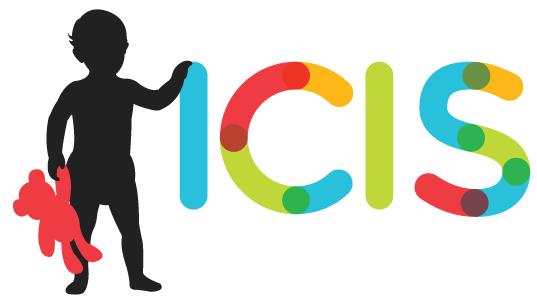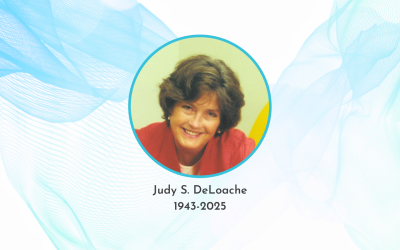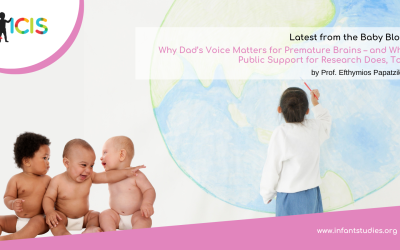by Hallie Garrison
Why get involved in outreach
Developmental science has the potential to positively impact the lives of children and families by informing policymakers and practitioners. However, researchers, policymakers, and practitioners tend to be entrenched in entirely separate communities with a lack of communication and trust, leading to limited uptake of new scientific evidence in policy and the criticism that researchers are out of touch with issues of practice. Bridging the gap between research and practice and research and the public will take large-scale cooperation between scientists, policymakers, and practitioners. Taking cost and time investment into account, is there anything that individual scientists and labs can offer to encourage engagement with research outside of academic circles?
In the Bergelson Lab at Duke University, we have spent the past few years focusing some of our energy beyond the walls of the ivory tower. For us, this takes two forms: writing about science for non-academic audiences and periodically visiting a local afterschool program to lead activities focused on communication science and sensory differences.
Much of our writing takes place on a blog, Babies and Language, where we try to make information about language learning interesting and accessible to a broad audience. We hope that the blog attracts parents, practitioners, and others who might be interested in language acquisition in typically-developing, blind, deaf, or hard-of-hearing babies and children. We also promote our blog using Twitter and TikTok (and our PI tweets, too, from a lab account where she makes nerdy jokes to connect(?)s with folks inside and outside academia about topics related to the lab’s research). Twitter offers an opportunity to reach teachers, therapists, advocates, and legislators. If networking efforts are focused locally, online relationships can also create fruitful arenas for recruitment and collaboration. And—as though you needed another excuse to spend time on Twitter—while scientists are mostly followed by other scientists, their following actually diversifies once they exceed 1000 followers to include non-academic audiences as well (Côté and Darling, 2018).
Tips and tricks of the trade
Committing to outreach goals is a big undertaking for any lab. There is always pressing research-related work, making it hard to find time for networking, relationship-building, and non-academic writing. What can labs do to prioritize interfacing with the public while maintaining their focus on the everyday work of science?
Delegate
Learning to communicate complex ideas to a general audience is a skill that is worth cultivating in trainees. Graduate students, post-docs, staff, and research assistants can help disseminate scientific information to the public while strengthening their communication skills and solidifying their own knowledge about their specialty area. Undergraduates are often particularly great at generating ideas for social media–in our lab, we asked undergraduates to translate our written blog posts into TikToks. To our great surprise, one research assistant’s TikTok even went semi-viral for instigating a comment debate about whether a small toy was a cow or a pig.
Practicing
Communicating research to a layperson audience is useful to students and it can be a welcome creative break from scholarly work.
Expand Networks
Leaders in child care centers, pediatrician’s offices, or schools may be willing to engage in public-facing writing, including guest blog posts or newsletter articles about their work with children. When your guest writer shares a post to their network, you benefit from an expanded audience who you may not have otherwise reached. You might be able to return the favor with your own short piece of writing for a newsletter, blog, or by speaking at a community event or on a podcast. Community leaders can also introduce you to their colleagues, diversifying your contacts and providing opportunities for you to keep apprised of current issues in practice.
When looking to get involved in K-12 schools, it’s critical to remember that teachers and administrators are already overburdened with responsibilities. Look for opportunities where your team can get involved outside of precious classroom time, such as in afterschool programs, camps, and other enrichment programs. We also recommend networking with other groups who are conducting outreach in similar ways to you. For our lab, the University of Maryland’s Language Science Center provided valuable feedback on our activities before we ever set foot in a classroom, reducing the need for repeated piloting of our curriculum.
Sharpen the Skill
Increasing public understanding of science can help expand funding for research, but communicating with the public about science is notoriously difficult. Even journalists with experience in science communication can struggle with overstating a new finding or getting bogged down in details. Luckily, there are many resources to help researchers learn to communicate more effectively. Universities often have communications teams who may host workshops or webinars about writing for a public audience. There are also formal training programs for science communication (e.g. through the American Association for the Advancement of Science or COMPASS), and trainees especially should be encouraged to seek out these kinds of opportunities, as they are (unfortunately) not likely to receive non-academic writing instruction as a part of graduate school.
Potential impacts and how to evaluate
The National Science Foundation seeks to keep its grant recipients accountable to taxpayers through the broader impacts criterion. Scientists must justify how their work will benefit society, a requirement that can be fulfilled through the work itself or through adjacent, related projects that are delivered directly to the public. In designing broader impacts proposals, scientists must think about how they will carry out the project, from how they will reach the intended audience, to how they will evaluate the project’s success.
One issue with trying to evaluate outreach programs is that each effort is highly unique. One scientist might have expertise in robotics and see the possibility of sharing knowledge with high school students, while another scientist might be more interested in and well-suited to serving on the board of a community organization. Even if we narrow the scope to only look at outreach with school-aged children, it is difficult to compare across goals and outcomes. Is a program’s goal to increase students’ knowledge about a certain topic? To encourage positive feelings about science among students?
However, there’s value in collecting data to assess the impact of outreach, even informally. In fact, there’s an entire center and website devoted to collecting informal summaries and evaluations of STEM learning experiences (Center for Advancement of Informal Science Education (CAISE); informalscience.org). While we may not be well-positioned to determine if meeting a scientist while in second grade impacts whether that student chooses to become a scientist, we may be able to ask whether they enjoy science more after more exposure. Similarly, we may be able to track the potential for science communication efforts to reach a broad audience by keeping tabs on simple metrics like page hits, IP address locations, and examining the most popular posts.
It takes a village
The list of responsibilities for academics is ever-growing. It’s reasonable for outward-facing tasks to be shuffled to the bottom of the list, behind all of the research, administrative, and teaching-related work. No one person can take on the task of making sure that their research reaches a non-academic audience, that it is well-communicated, and that it inspires budding young scientists (or whatever your specific goals may be). It is critical to bring other members of your research community on board to design and implement outreach projects–whether that’s graduate students, collaborators, staff members, or friends. You’re likely to be met with a great deal of enthusiasm when you begin to explain your goals to others. After all, who doesn’t want their work to make an impact beyond their office walls?
This work was supported by the National Science Foundation CAREER Grant (BCS-1844710) to Elika Bergelson.
About the Author

Hallie Garrison
Duke University
Hallie Garrison is a Research Associate in Dr. Elika Bergelson’s lab at Duke University. She is enthusiastic about helping non-academics access and understand research about babies.




